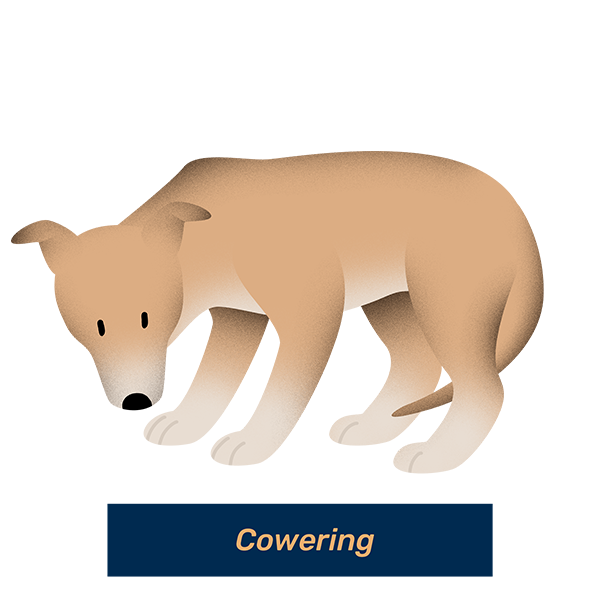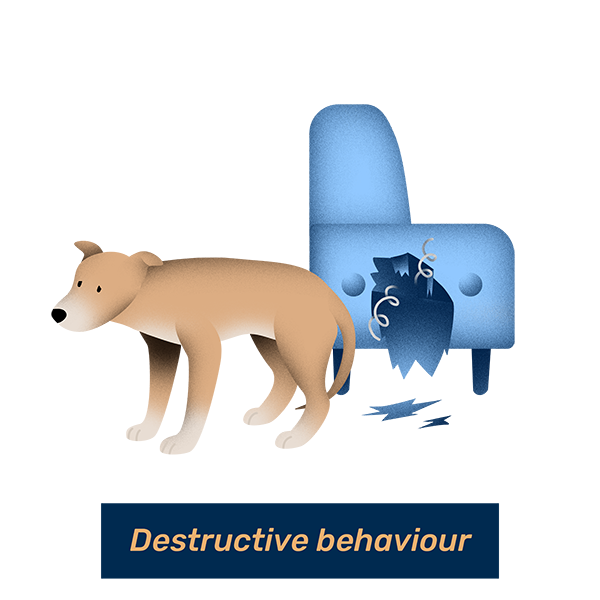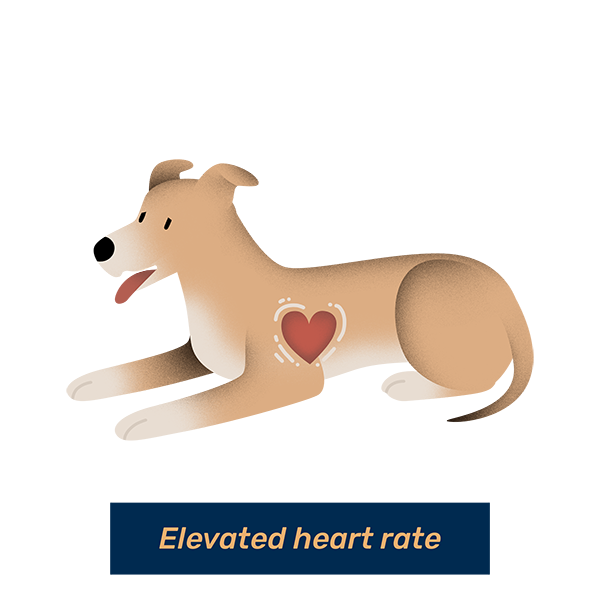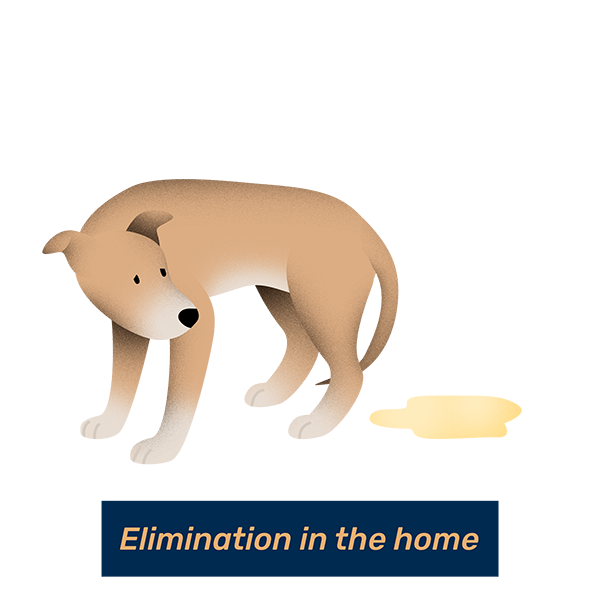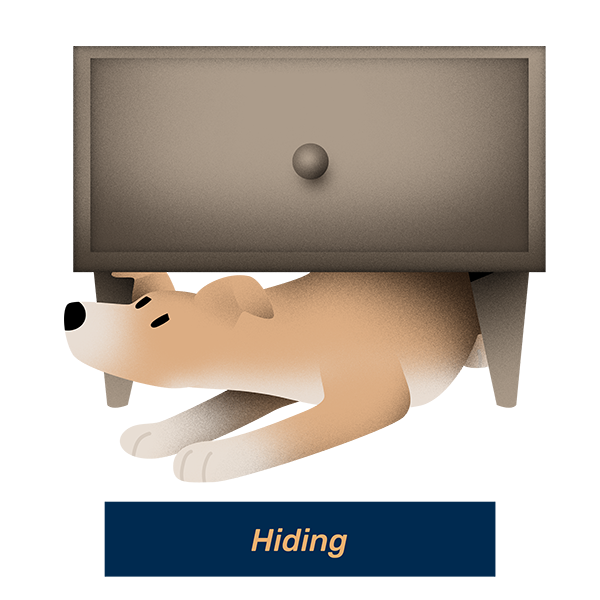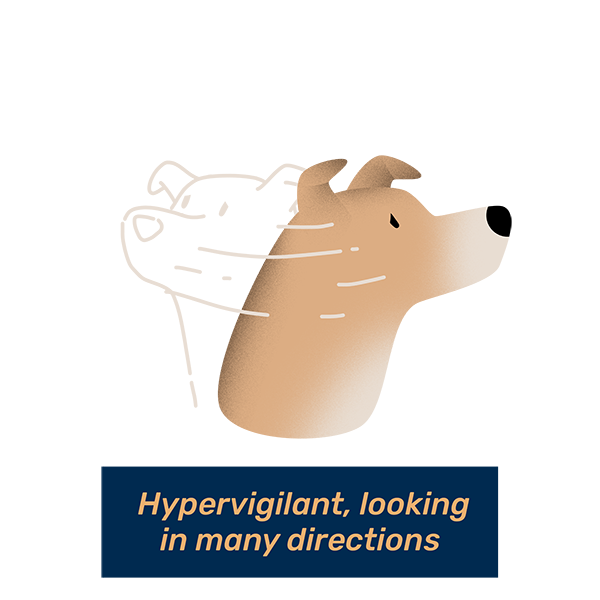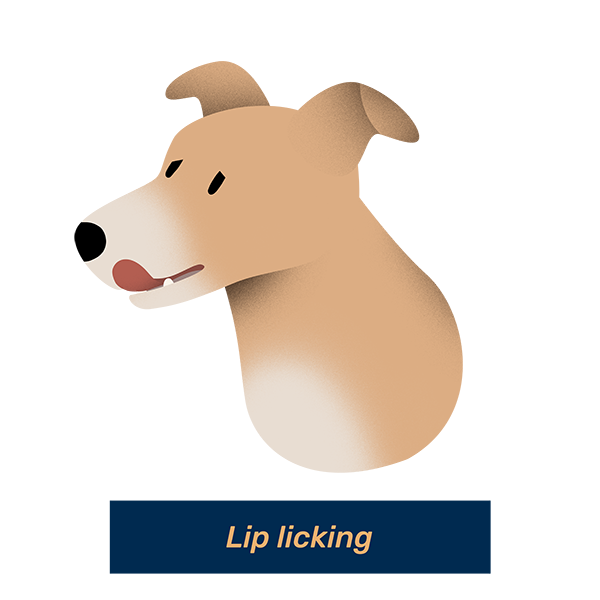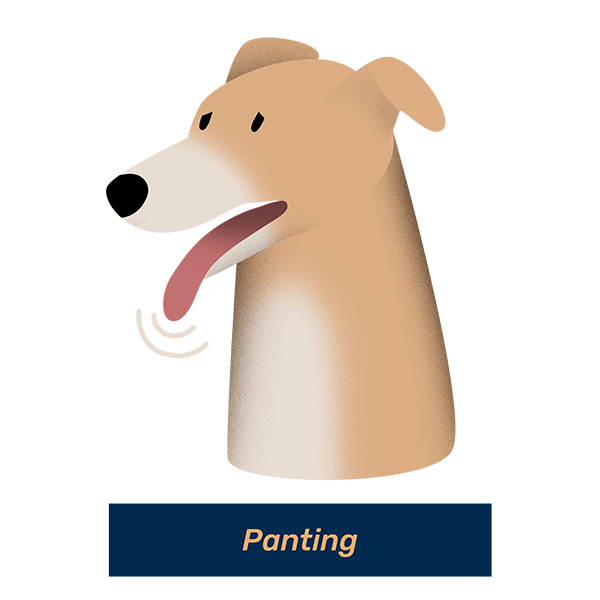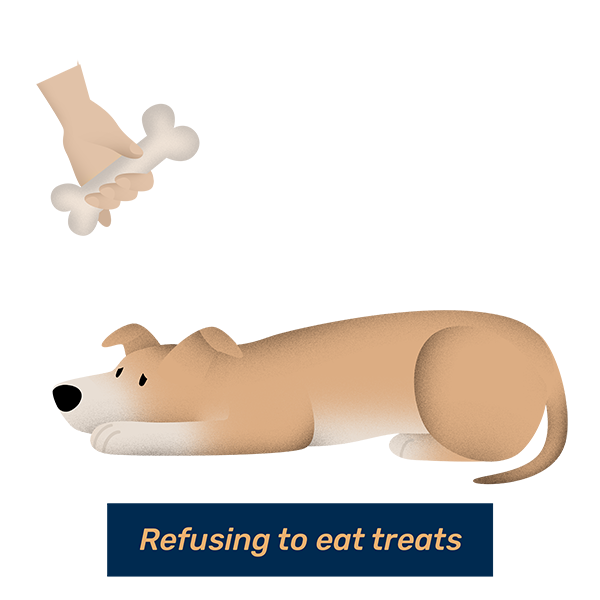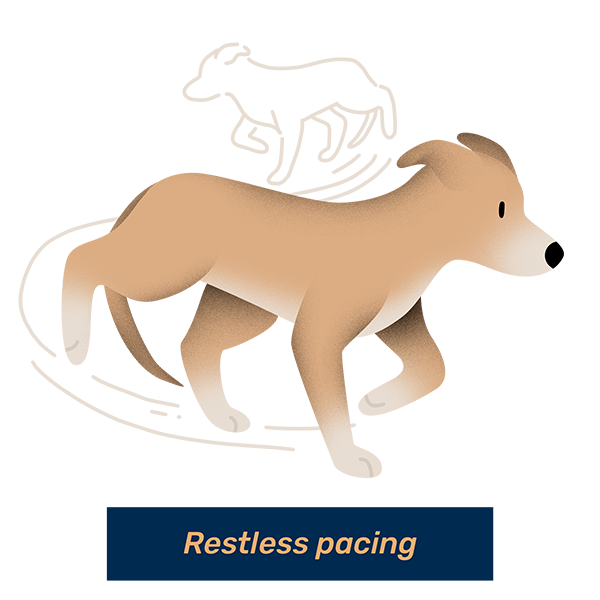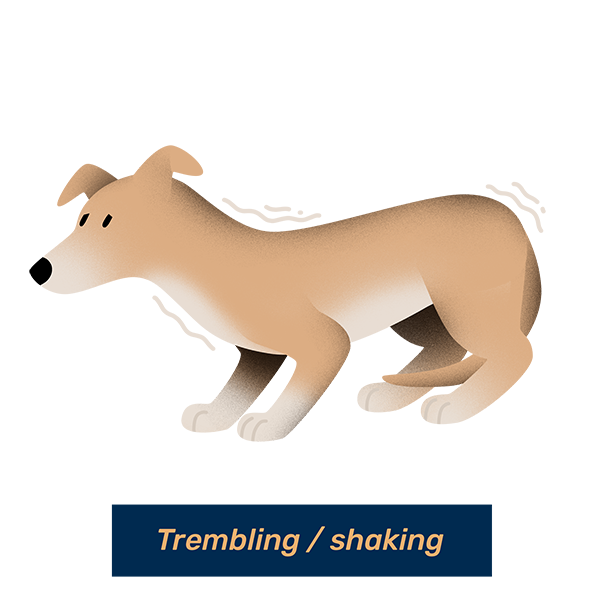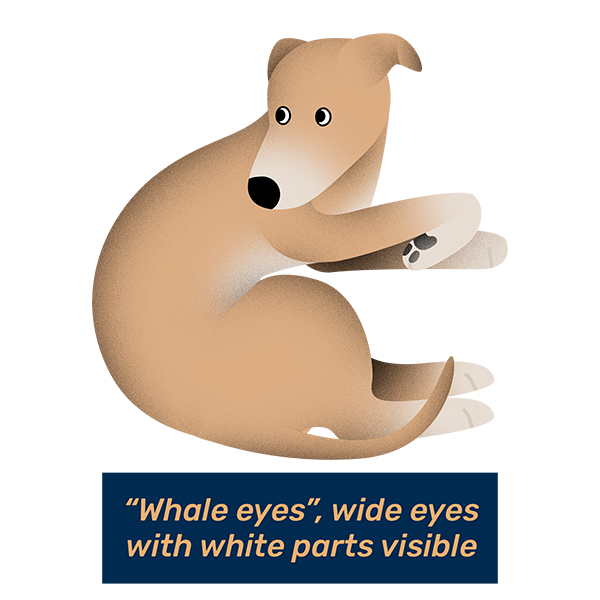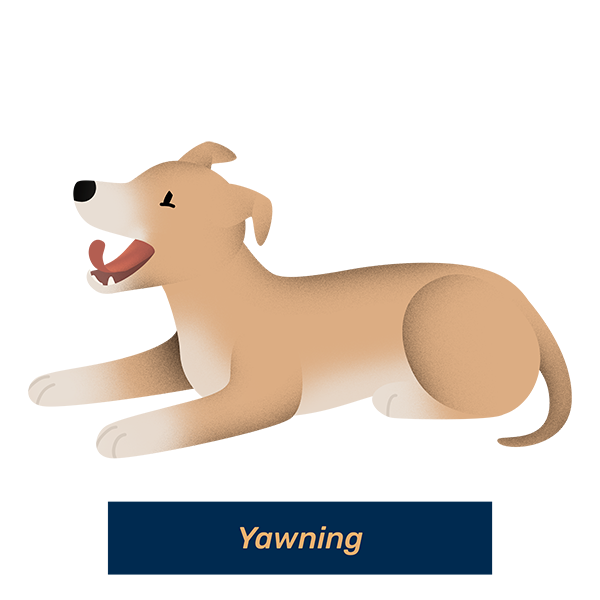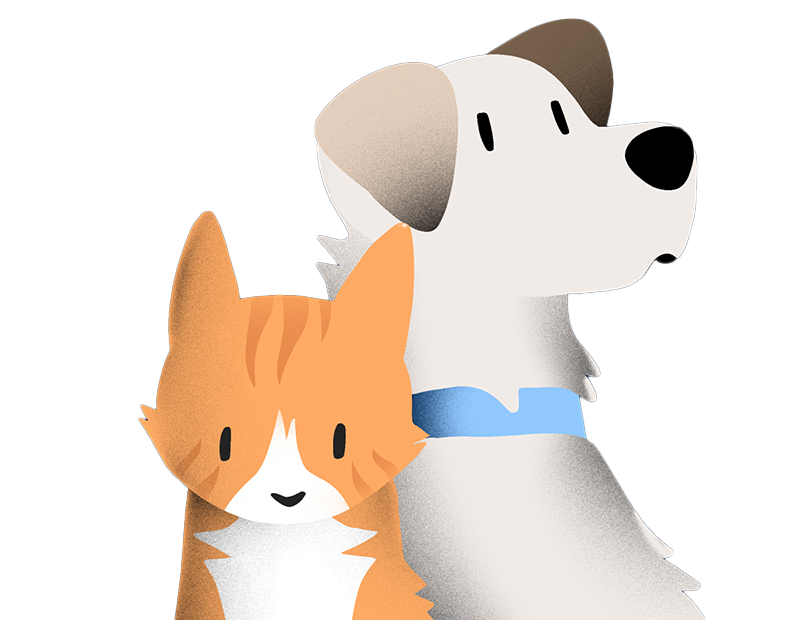Common signs
There are numerous different signs of noise anxiety in dogs. The signs can vary from one dog to another individually, and their intensity depends on how fearful and/or anxious the dog is. A severe case of noise anxiety is easier to detect than a milder one. In both cases the dog needs help. Early recognition is essential.
THE SIGNS ARE NOT ALWAYS THE SAME. A severe case of noise anxiety is easier to detect than a milder one. What might come as a surprise even to the owner is that the signs are not always that obvious. With every negative experience noise anxiety can gradually develop and get worse if it’s not treated properly.
Typical signs of noise anxiety include panting, trembling, shaking, and hiding under furniture or other items. Restlessness, barking, whining, and other vocalization are also common signs. The dog’s ears are usually drawn back, and the dog might be more clingy than usual. These signs of noise anxiety are rather easy to detect.
SOME OF THE SINGS ARE MORE SUBTLE, such as lip licking, swallowing, and yawning. Furrowed brows or wide eyes can also be signs of noise anxiety. Your dog might show only one of these signs, or a combination of them.
